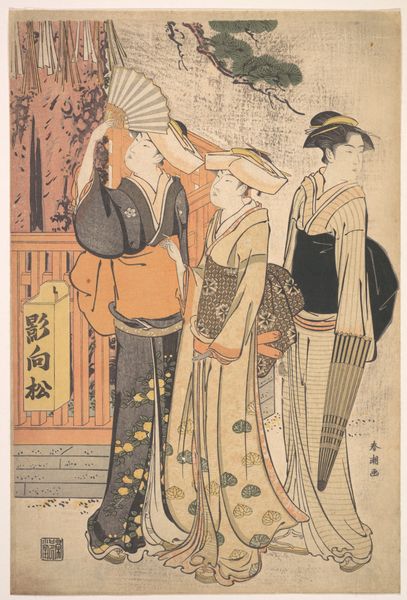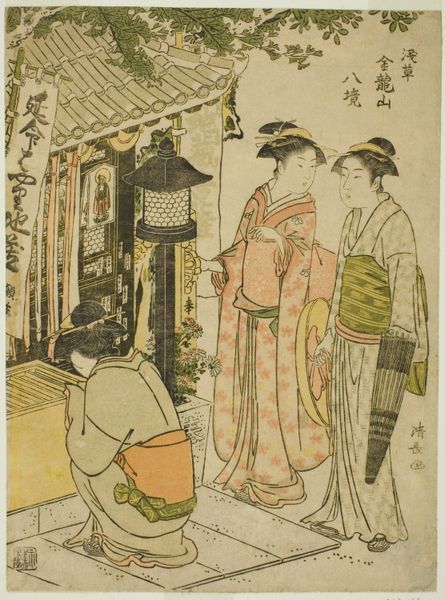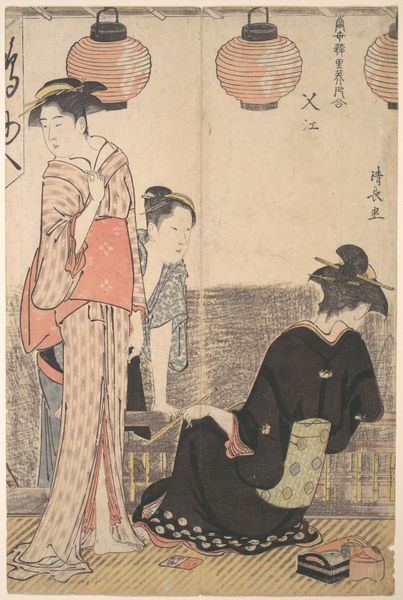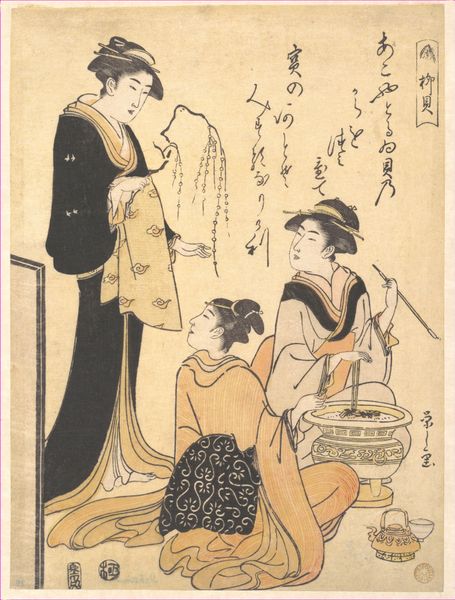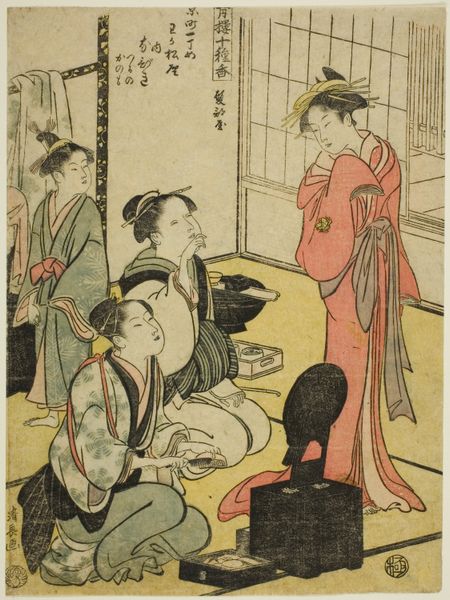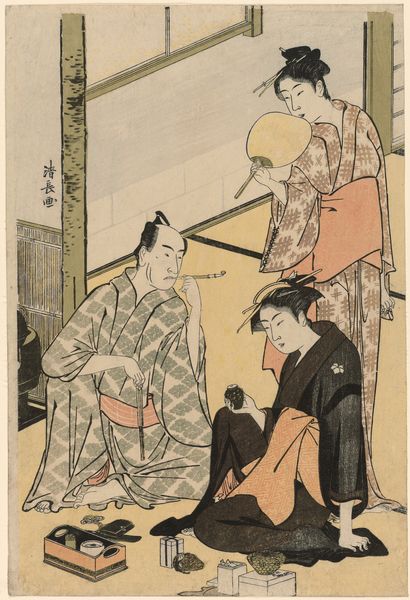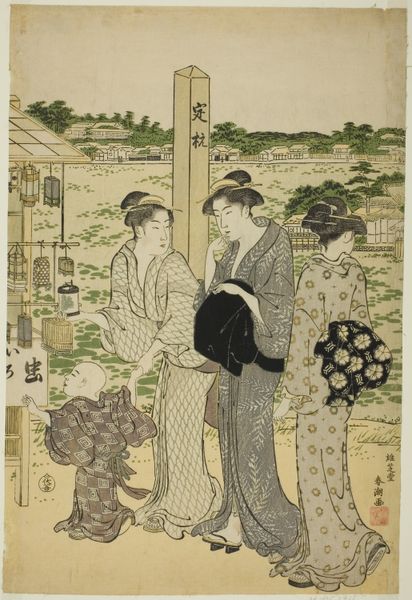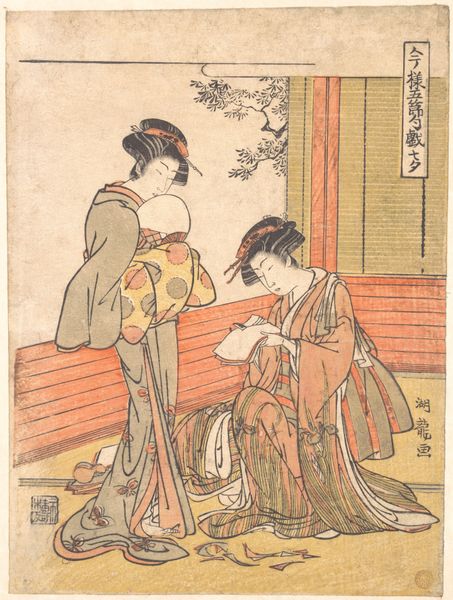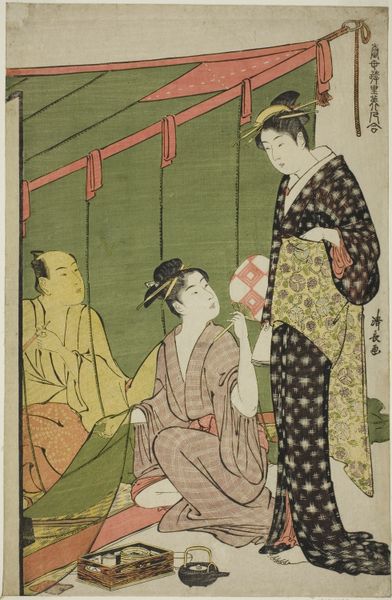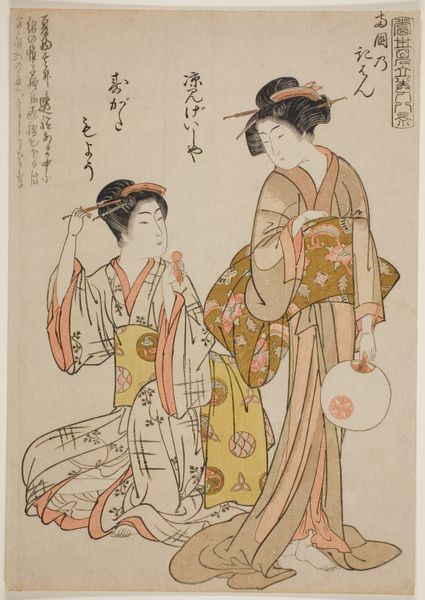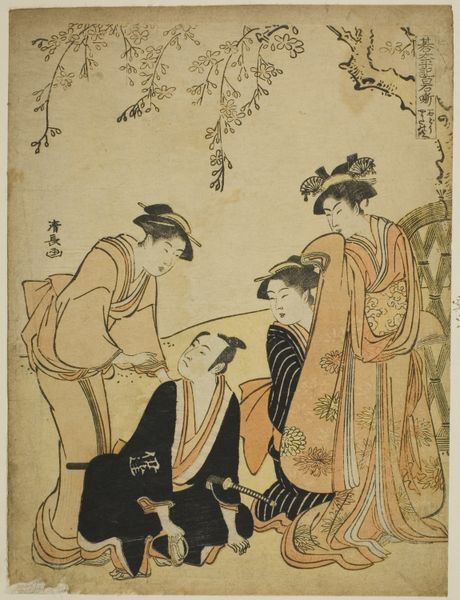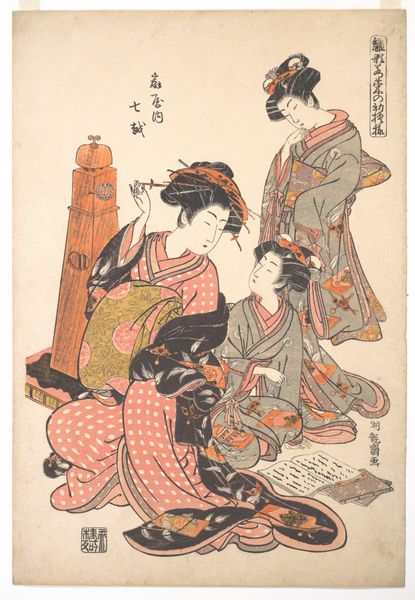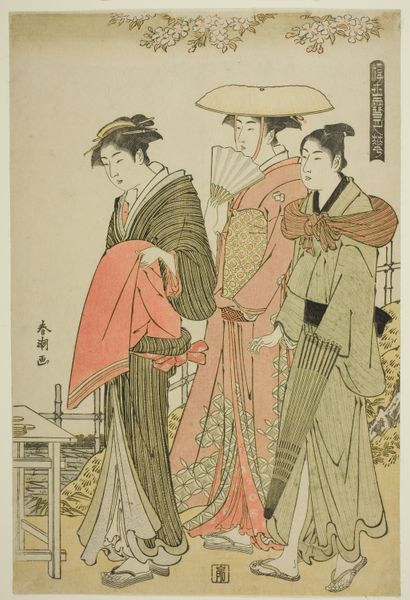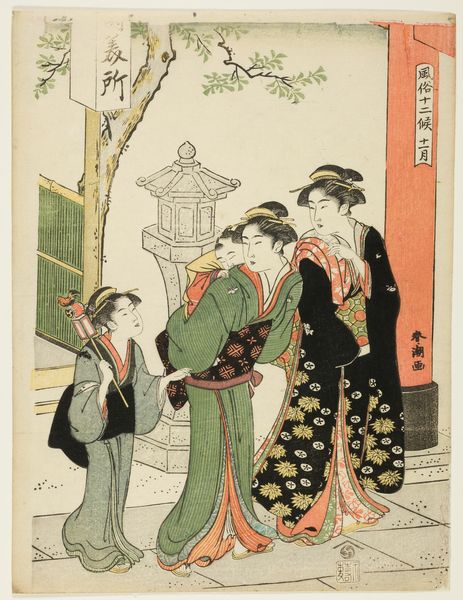
Rabbit-Ear Irises in Autumn, from the series "Choicest Odes upon Flowers of the Four Seasons (Shuku awase, shiki no hana)" c. 1792
0:00
0:00
print, woodblock-print
# print
#
asian-art
#
ukiyo-e
#
figuration
#
woodblock-print
#
genre-painting
Dimensions: 25.4 × 19 cm (10 × 7 7/16 in.)
Copyright: Public Domain
Curator: This print, housed here at the Art Institute of Chicago, is called "Rabbit-Ear Irises in Autumn, from the series 'Choicest Odes upon Flowers of the Four Seasons,'" created around 1792 by Katsukawa Shuncho. It’s a woodblock print, showcasing figures within a landscape. Editor: Hmm, the overall feeling is... autumnal melancholy, almost? They’re gathered but each seems caught in their own little world, especially that figure seated on the right, gazing away. Like she’s internally composing a sad poem. Curator: Ukiyo-e prints, like this one, were frequently commissioned to depict idealized beauties or fashionable women. The figures here are quite refined, representative of the Edo period's sophisticated tastes. And irises themselves are culturally resonant, representing protection and purification. Editor: You can see the rabbit ears of the title reflected in the way the women's hair is styled and secured with various ornate accessories. What about the way the artist chooses to depict the relationship of foreground and background here? The mountain landscape isn't treated as "background," but something actively enfolding the women. It blurs the lines. Curator: That relationship you noted, that interplay between cultivated beauty and the natural world, echoes the integration between human emotion and environment common to Japanese aesthetics, such as is present in haiku poetry or seasonal festivals. Editor: These types of images act almost like a communal memory repository. We see the costumes, the scenery and habits depicted. Each tells us something more. And seeing it repeated again and again over centuries means we can access an accumulated emotional resonance. Curator: I agree. Shuncho subtly infused seasonal symbolism with the human element in order to evoke contemplation. I believe that kind of reflection is an ongoing, dynamic process. Editor: Agreed, and how art manages to do that...it still kind of amazes me.
Comments
No comments
Be the first to comment and join the conversation on the ultimate creative platform.
